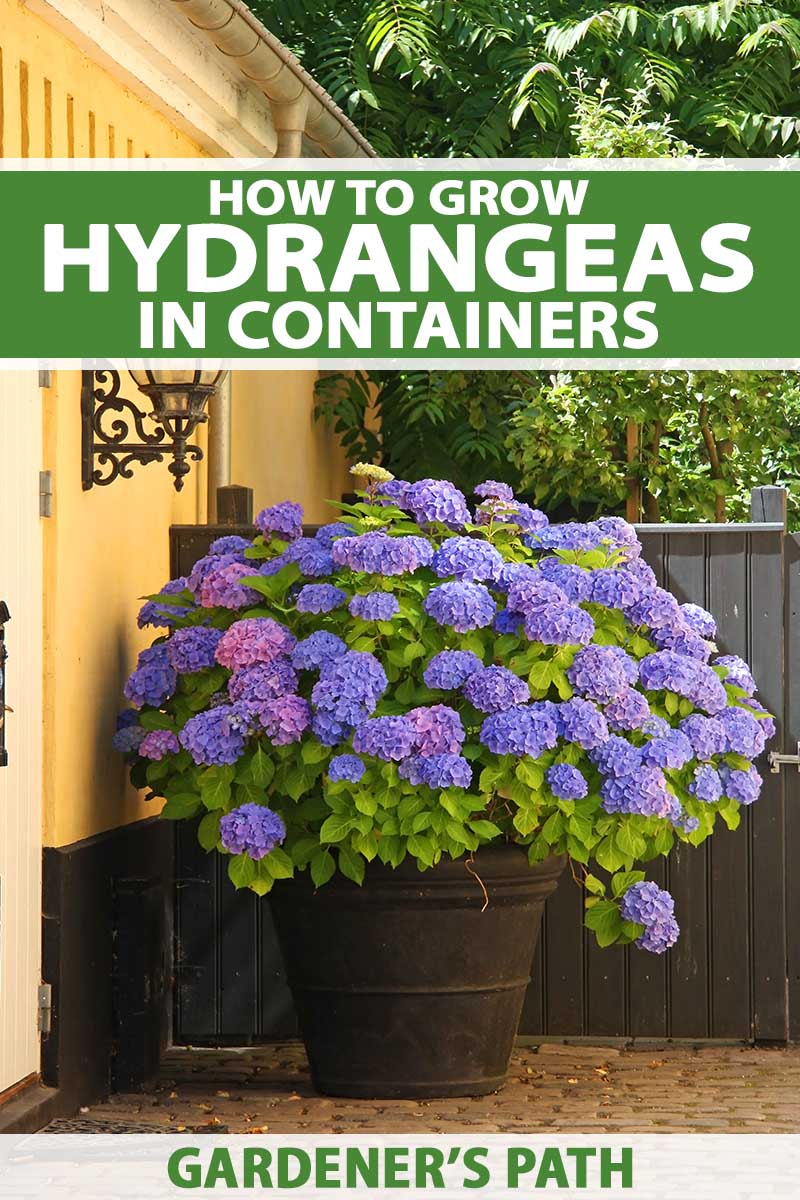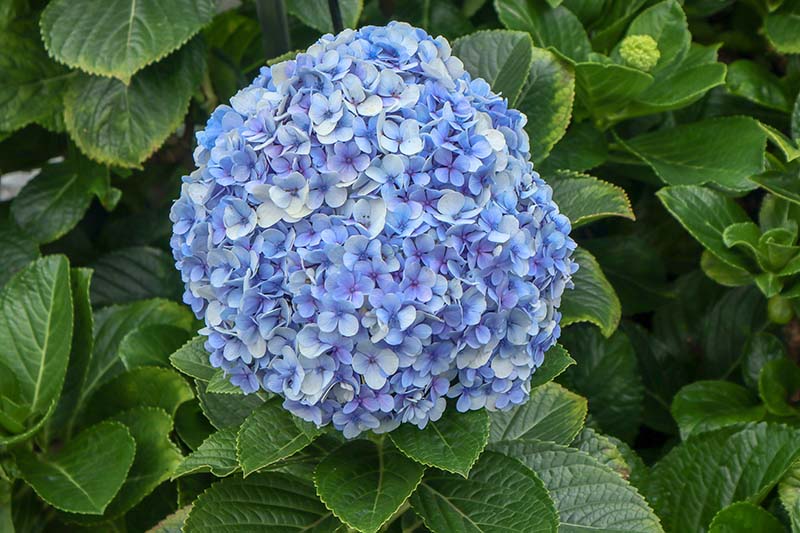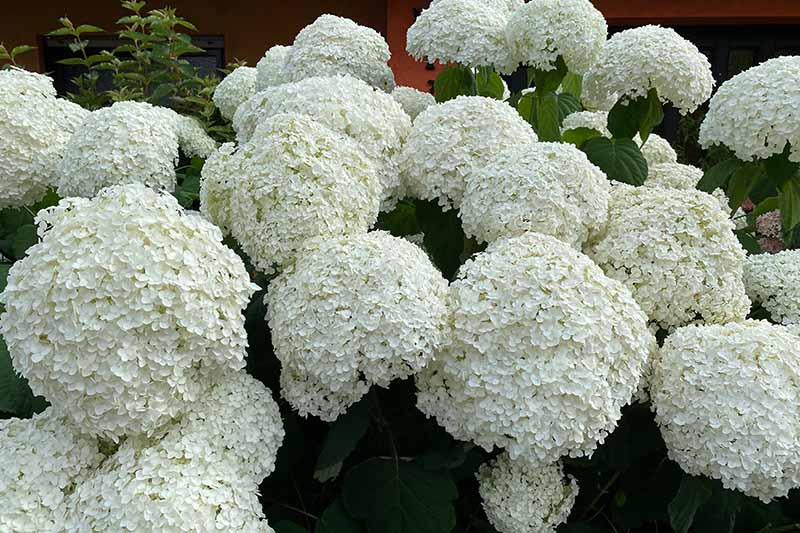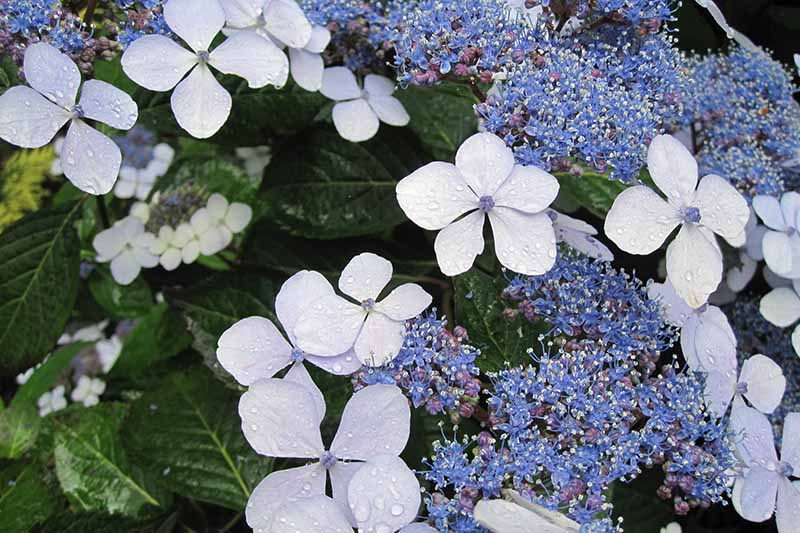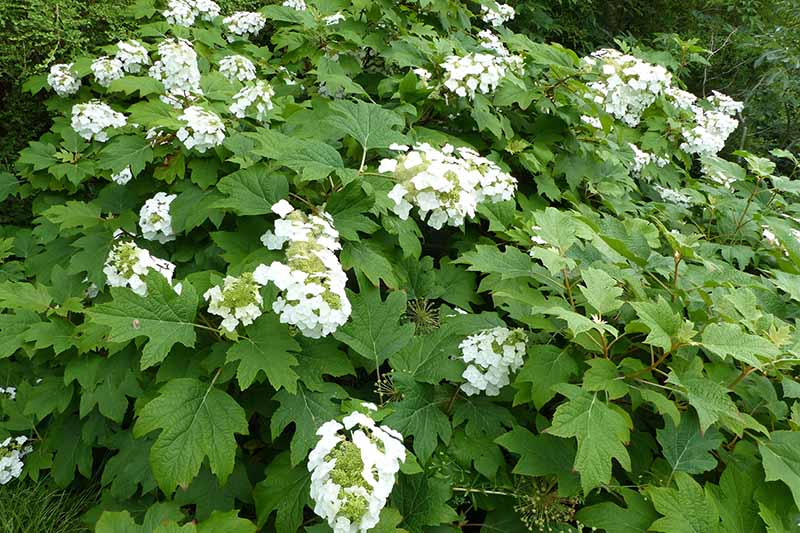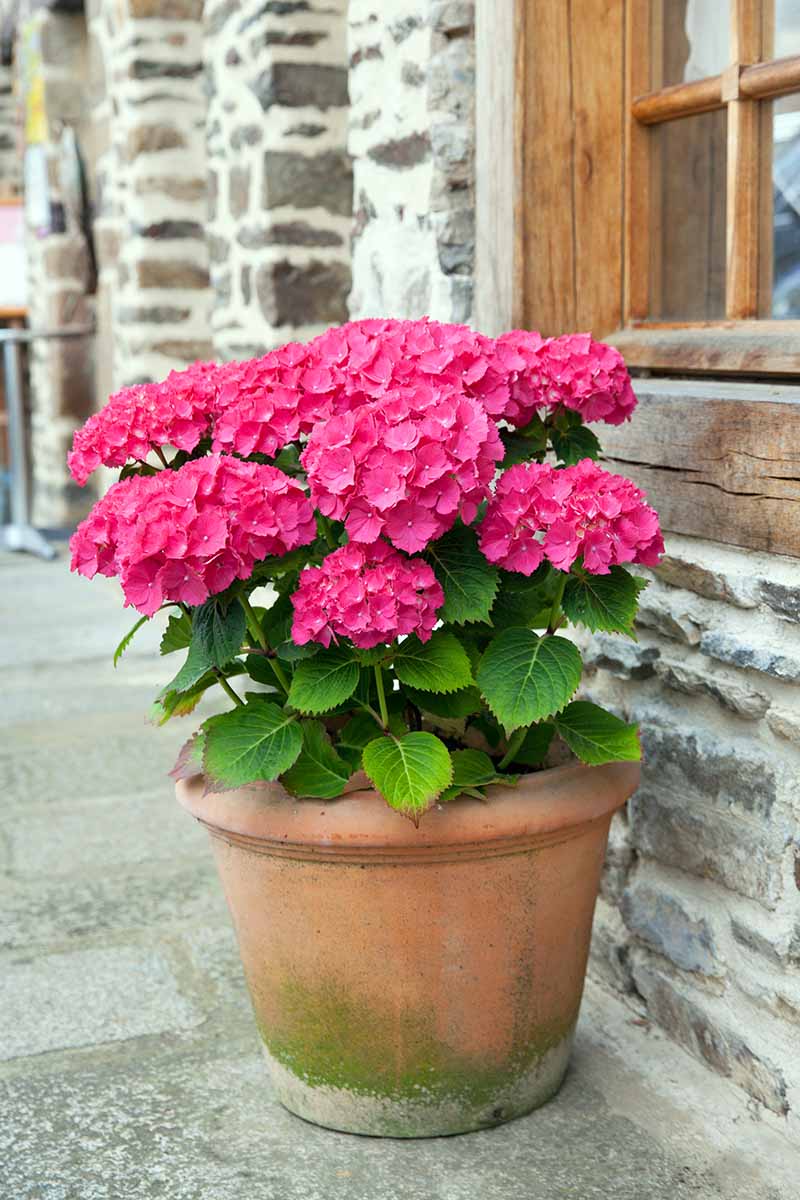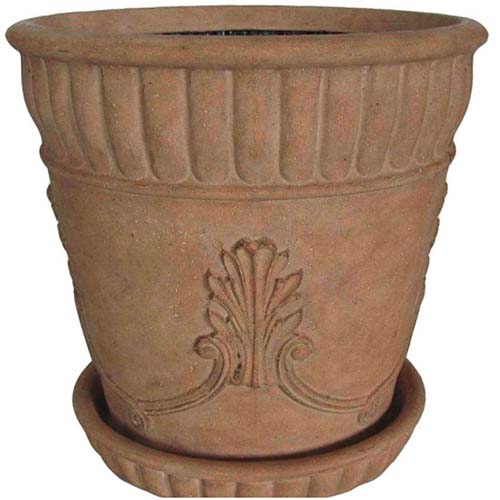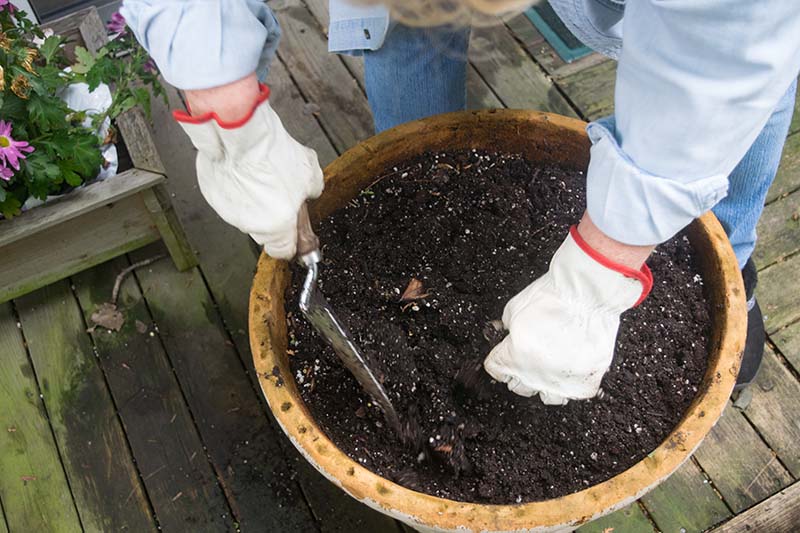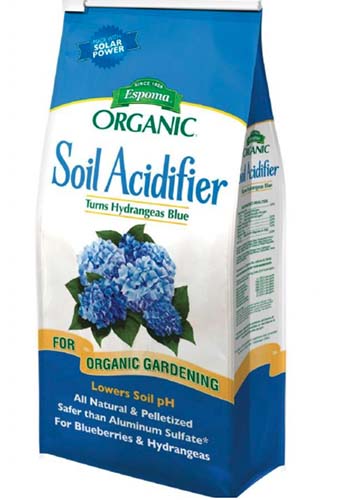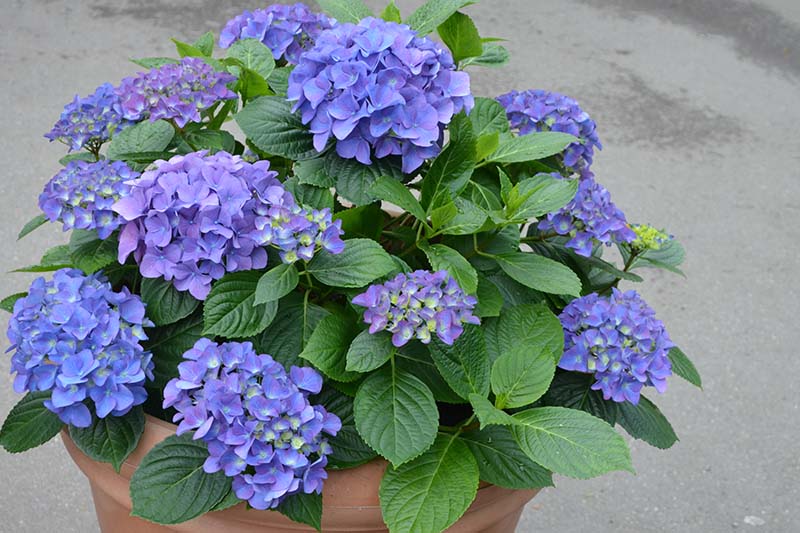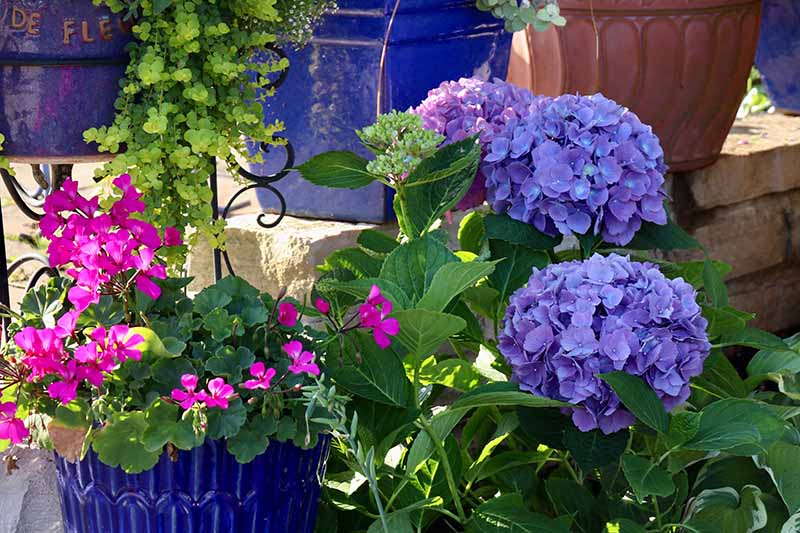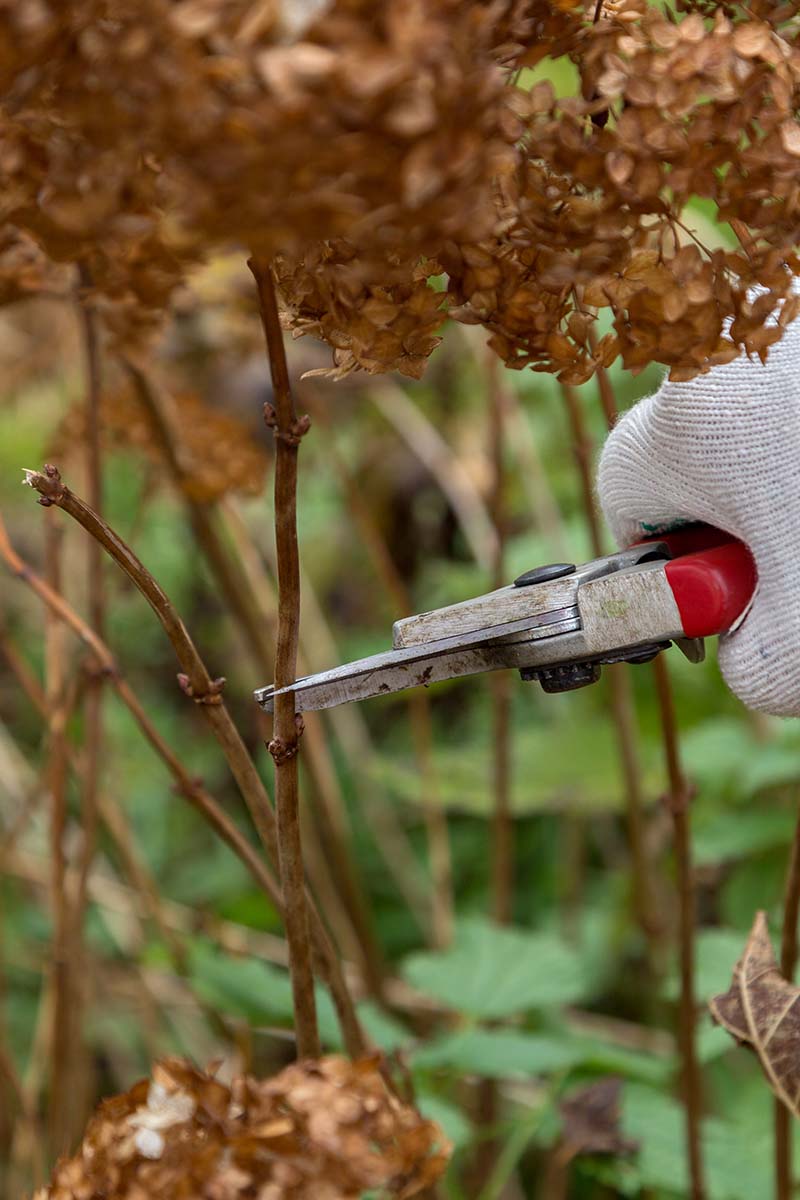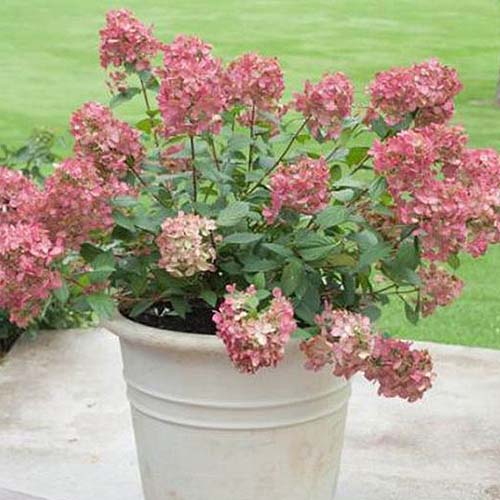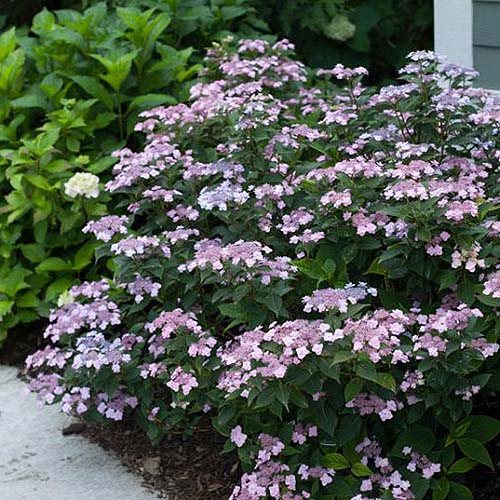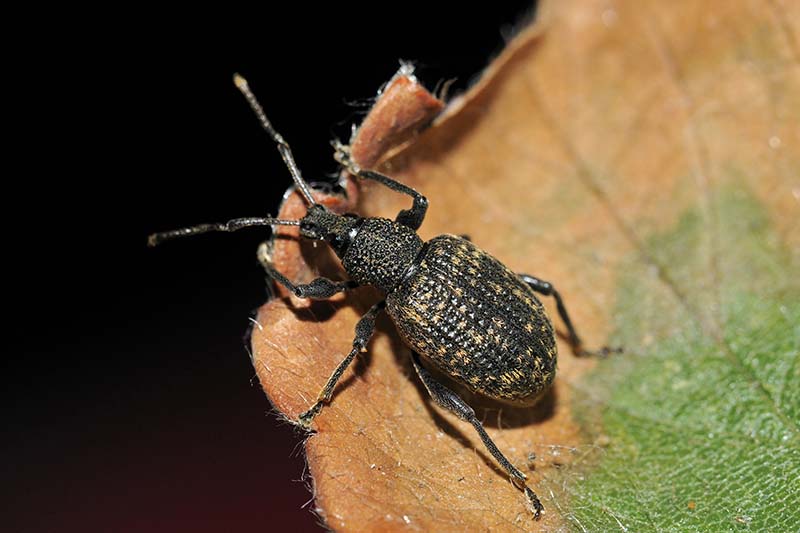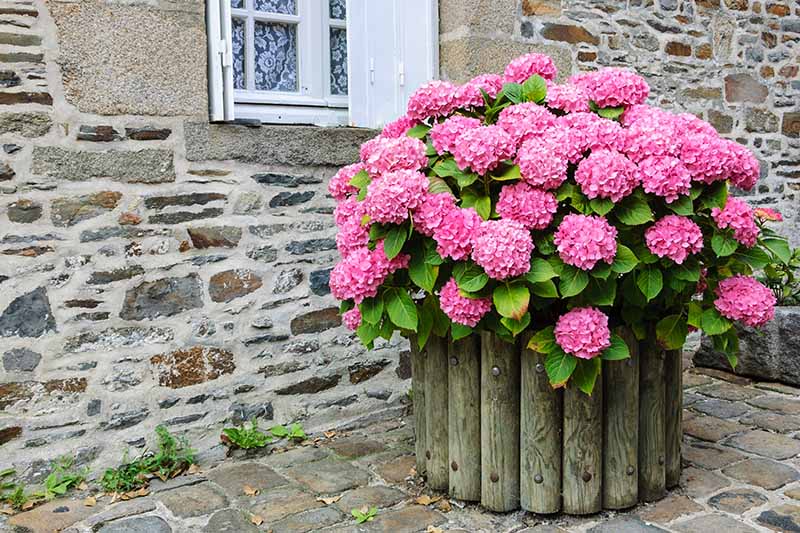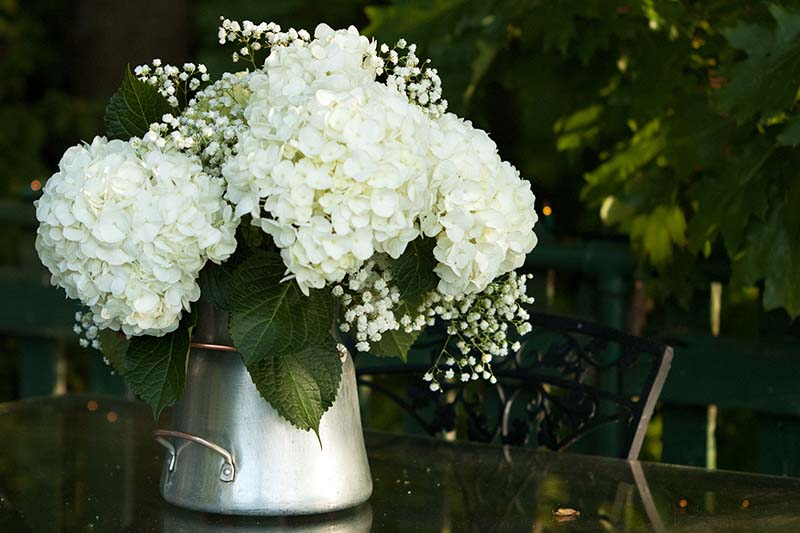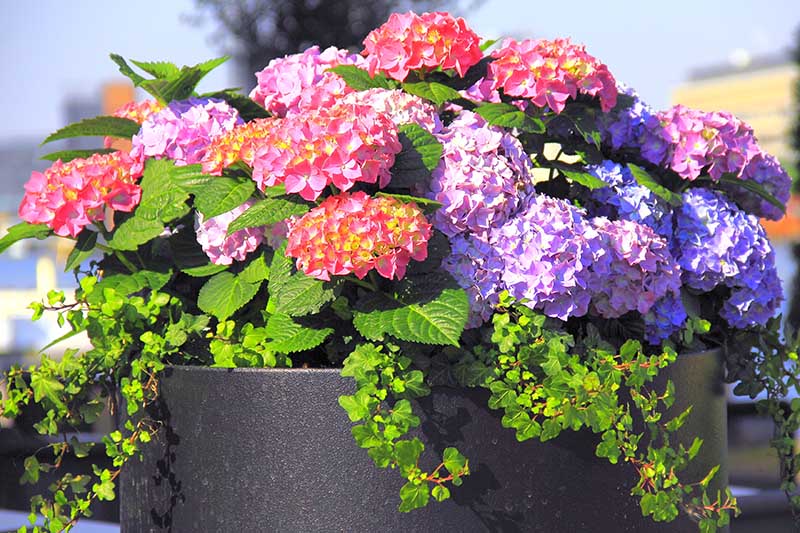These old-fashioned yet utterly stylish plants are a colorful addition to borders and beds, can be planted as a hedge, and are easy to grow in containers as well. In our guide to growing hydrangeas, we discuss everything you need to know about cultivating these beauties in your garden. We link to vendors to help you find relevant products. If you buy from one of our links, we may earn a commission. Shrub hydrangeas are the best type to grow in a container, and we’ll cover some of our favorite container-friendly cultivars below. No matter which type you grow, make sure to keep it out of reach of pets and children, as the plants are toxic to humans and animals alike.
Getting Started
Many cultivars of these long-blooming shrubs produce flowers during the spring, summer, and fall. “mophead” The popular “bigleaf” varieties (Hydrangea macrophylla) grow large, rounded clusters of pink, blue, purple, and even bright green or red flowers, depending on the variety and growing conditions. In addition, some H. macrophylla varieties feature tiny lacelike flowers surrounded by larger blossoms – these are commonly known as lacecap hydrangeas. H. macrophylla flowers on either old or new wood, depending on the cultivar, and are highly sensitive to the pH of the soil. The ideal pH is between 5.2 and 5.5, and plants grown in these conditions will typically produce blue flowers. More alkaline soil, in the range 6.0 to 6.2 will turn the flowers pink or mauve. Bigleaf types typically thrive in USDA Hardiness Zones 6 to 9, and sometimes 5. Panicle hydrangeas (H. paniculata), another popular species, are usually white. Their flower heads are shaped like plump ice-cream cones, and the blossoms will often fade to a pleasing pink color over time. These extra-hardy hydrangeas thrive in Zones 3 to 8 and sometimes 9. Panicle varieties bloom solely on new wood, and can be cut back in winter. And unlike bigleaf types, they’re not picky about soil pH and will thrive in a range between 5.0 and 7.0. Shade-tolerant smooth hydrangeas (H. arborescens) are a lot like mopheads in terms of the shape and size of the flower head. But the individual flowers are smaller, and they always grow on new wood. These tall shrubs are native to the southeastern United States but they grow well in Zones 3 to 9. Their cream-colored blooms fade to green over time. Mountain hydrangeas, H. serrata, feature “lacecap-style” blooms, with a center of tiny blooms. This species grows best in Zones 6-9. As with H. macrophylla, a lower pH will turn H. serrata flowers blue, and in more alkaline soil, they’ll be pink. The final species suited to container growing is the oakleaf hydrangea (H. quercifolia). As its name suggests, this type has foliage that resembles oak leaves and it turns crimson in the fall. The white flowers grow in a cone shape and are less “full” than they are in other species. Oakleaf varieties thrive in Zones 5 to 9.
Why Grow in a Container?
Lack of space is one reason why you might want to grow your hydrangeas in containers. I like to place containers of long-blooming flowers on my front porch every summer – it gives me a lift to look at them each time I leave and come home. With their compact height and full, rounded look, hydrangeas in pots are ideal on balconies, patios, or as a focal point in the garden.
Another factor to consider is the cold. If you live in Zone 4 or 5 and wish to grow classic bigleaf types, keeping them in containers allows you to bring them indoors or move them into a sheltered area during the winter, where they won’t die from exposure to the cold. You can also more easily adjust the pH of the soil in containers for H. macrophylla varieties that change color.
Choosing the Right Container
The most important consideration when you’re choosing a container is its size. The roots need plenty of space in order to thrive, so you will need a pot that’s around two feet wide and deep, with drainage holes in the bottom. While this pot looks extremely heavy, it’s made of a mix of stone, resin, and fiberglass, and it actually weighs just 20 pounds.
Cast Stone Pot with Saucer This 22.75-inch planter from the Home Depot is an excellent choice – it also comes with a draining dish. This makes it sturdy enough to hold up those lush blooms but not so heavy that it’ll be impossible to move. A large terra cotta container works well, too, although it’s heavier to move, so you may wish to invest in a wheeled base. You can also use a plastic, concrete, or wooden container, so long as it has adequate drainage holes in the bottom and a wide base. Learn more about the different container materials in this guide.
Preparing Your Container
Whichever container you choose, if it’s been used before, make sure to clean and disinfect it thoroughly before planting to avoid the spread of disease. Fill your chosen pot with high-quality potting soil, leaving two inches of space between the soil and the top of the container so that when you water, it doesn’t overflow.
How to Grow
Hydrangeas are most commonly sold as young plants in small pots from a nursery.
Miracle-Gro Nature’s Care Organic and Natural Potting Mix Or, you can use a mixture of topsoil, well-rotted compost or manure, and perlite for drainage. However, it’s advisable to use a fresh potting mix to prevent introducing any pests or disease from the garden into your containers.
If you’re planning to plant any pH-sensitive H. macrophylla varieties and want to use garden soil, consider conducting a soil test first. If you need to lower the pH of the soil, you can add some soil acidifier according to package instructions.
Espoma Soil Acidifier I like this one from Espoma, available from Home Depot, as it’s designed especially for hydrangeas. When you bring yours home or receive it in the mail, dig a hole as deep and wide as the original pot, remove the plant, and place it inside.
It should be as deep in the soil of the new container as it was in the old one. After planting, water the plant thoroughly, until it drains out the bottom of the pot. Place the container in a sheltered area that receives morning sun and afternoon shade for best results. If they are in a full sun location, you’ll need to be extra vigilant about watering. Thoroughly water the shrub a few times a week, or whenever the top inch of soil begins to dry out. These thirsty plants will quickly start to droop if they don’t receive enough water, so check them daily, particularly during hot or dry spells. You can also apply a layer of mulch to aid water retention.
Fertilize the plants once in the springtime using a balanced 10-10-10 (NPK) fertilizer. As for pruning, you don’t need to prune mophead hydrangeas, which bloom on old wood. Pruning can actually cause the plant to produce fewer blooms the following year. Just deadhead old flowers and remove dead or diseased branches when needed. If the shrub is getting too large for the container, consider transplanting it to a larger one. Hydrangeas that bloom on new wood, such as H. paniculata, can be cut down to one to two feet tall after their leaves shrivel and die each fall.
In the winter, mulch the container with straw to help the roots stay insulated during the cold months. Or, consider moving the pot into a garage or shed. Bring it back outside when temperatures consistently move above 15 to 20°F.
Growing Tips
Put your container in a sheltered, full to part sun location (morning sun is best). Water a few times a week, or daily if needed. Fertilize once a year, in early spring. Cut hydrangeas that bloom on new wood down to one to two feet tall in the late fall.
Managing Pests and Disease
As they do with most plants, aphids can target your hydrangeas, and they can infest new growth on a plant quite quickly.
Cityline Paris
There’s nothing quite like the sight of the Eiffel Tower at sunset. I’ve been lucky enough to see this sight twice, and one day I hope to return with my son. But in the meantime, we’ll console ourselves with the lovely ‘Cityline Paris,’ a H. macrophylla that blooms green and red and then matures into a bright pink color.
‘Cityline Paris’ ‘Cityline Paris’ grows and spreads just one to three feet, which makes it an excellent choice for container growing. Even better, this cultivar is resistant to mildew. Like other H. macrophylla varieties, it’s hardy to Zones 5 to 9. You can find plants available at Burpee.
Fire Light
For a long-lasting display of flowers that reliably change color over time, try ‘Fire Light.’ This H. paniculata variety blooms in panicles of crisp white that turn a deep pink color over time. Hardy in Zones 3 to 8, ‘Fire Light’ is an excellent choice for gardeners in cooler locations.
‘Fire Light’ It grows four to six feet tall and wide at full maturity, but adapts well to container growing and can be pruned lightly to maintain a compact size. Unlike other hydrangeas, though, ‘Fire Light’ loves the sun and needs at least eight hours a day in order to produce its most radiant flowers. Find quart-sized, three-inch, or five-inch containers available at Nature Hills Nursery.
Tiny Tuff Stuff
With alluring pink or blue flowers (and sometimes both), ‘Tiny Tuff Stuff’ is a gorgeous H. serrata cultivar that grows just two feet tall and wide. The perfect size for container growing!
‘Tiny Tuff Stuff’ This cultivar thrives in Zones 6 to 9, but it can withstand Zone 5 winters with protection. You can find a quart-sized container available at Nature Hills Nursery. If you notice these pesky sap-suckers, spray them off with a hose and apply insecticidal soap or neem oil to the plant. A more insidious pest is the black vine weevil (Otiorhynchus sulcatus), which can kill a hydrangea if infestation goes undetected. The weevil larvae eat the roots, causing the plant to turn brown and die. Adult black vine weevils are half an inch long and black with yellowish speckles on their back.
They feed on the edges of the leaves during nighttime. For a full breakdown of how to protect your lovely shrubs from these diseases, see our guide to identifying and treating hydrangea diseases.
BotaniGard ES Common diseases that plague hydrangeas include anthracnose, powdery mildew, botrytis blight, bacterial leaf spot, and more.
Best Uses
Aside from dazzling your yard, porch, or balcony with their elegant displays of color, hydrangeas make ideal cut flowers.
To help them last longer, cut a long portion of flower stem, bring it to a vase filled with water and your favorite flower food, and cut again at a 45-degree angle before placing the stem in the vase. Make sure the cut is clean, because an injured stem will heal itself – in other words, it will seal up – which prevents water from reaching the thirsty leaves and blossoms.
Change the water every few days, using the same method to re-cut the stem. Mist the blossoms with water daily to help keep them fresh. If you add pots of marigold, lavender, and geraniums in hues of pinks and purples, you’ll have a collection of blooms to make even the hardest heart soften with joy.
Do you grow your hydrangeas in pots? Let us know in the comments below, and feel free to share a picture! And for more information about growing hydrangeas in your garden, check out the following guides next:
25 of the Best Hydrangea Varieties for Landscaping, Both Large & Small How to Identify and Treat Anthracnose on Hydrangeas How to Grow Beautiful Hydrangeas from Cuttings
© Ask the Experts, LLC. ALL RIGHTS RESERVED. See our TOS for more details. Product photos via Arbico Organics, Burpee, Dr. Earth, Espoma, Home Depot, and Nature Hills Nursery. Uncredited photos: Shutterstock. With additional writing and editing by Clare Groom.

